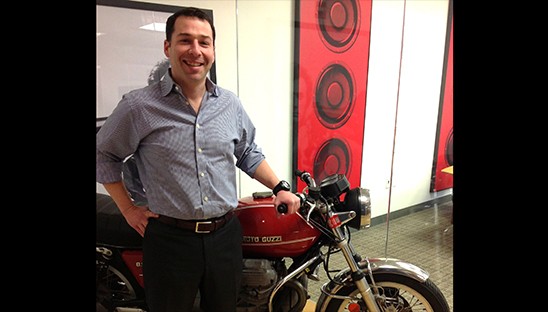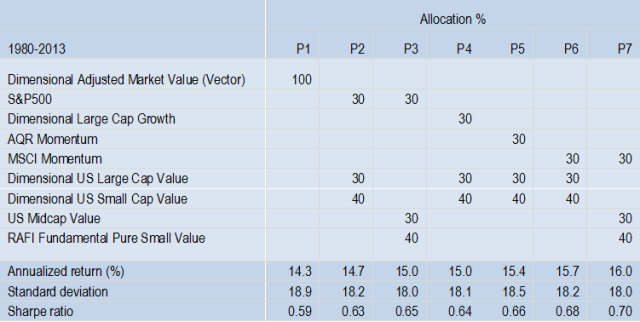RAFI funds made easy
Post on: 13 Сентябрь, 2015 No Comment

2C61 /%
Warren Buffett has consistently delivered superior returns through his company Berkshire Hathaway. He is regarded as one of the worlds investment greats and is sometimes referred to as the Sage of Omaha.
Index trackers have many advantages over actively managed funds, ranging from low costs to the comfort of knowing your returns are going to come close to matching the performance of your chosen stock market index. Actively managed funds are more expensive and there is no guarantee you will come close to the performance of a benchmark like an index. However, some fund managers produce returns that are superior to the indices.
What if you could have the best of both worlds: an index tracker that chooses shares like a star stock-picker such as the legendary Warren Buffett. This is where RAFI funds come into the picture.
The RAFI investment process
2C150 /%
Mike Brown, managing director of etfSA.co.za, gives the low-down on RAFI funds.
These funds are marketed under the trademark RAFI. This stands for Research Affiliates’ Fundamental Indexation. “This is an investment process provided by a Californian company (Research Affiliates), which owns worldwide patents for its investment techniques,” says Mike Brown, managing director of etfSA.co.za .
Fundamental indexation, he says, looks at a formula for evaluating companies based on their accounting data over the past five years. “It uses a series of ‘common filters’ for accounting data, such as cash flows, book price, dividend flows, and so on, to come up with a valuation metric for each company.” Companies are weighted in RAFI indices on “valuation metric scores”.
Funds, like unit trusts and stock-exchange Exchange Traded Funds (ETFs), that carry the RAFI branding don’t do as well as you might expect in South Africa. etfSA.co.za tracks ETF monthly performance and says that the “jury is out” on whether RAFI is suitable for domestic conditions.
“Globally, RAFI techniques are supposed to produce total return performance better than the All Share indices of the markets they track. The South African underperformance is not typical,” says Brown.
More costly than ordinary index trackers
The licence in South Africa is owned by FTSE/JSE. “By the time you have paid the Research Affiliates licence fee and the FTSE/JSE licence fees to track the RAFI indices, this adds up to significantly more than the usual tracking fees paid for other indices,” says Brown. The Absa Capital RAFI ETFs do not use the FTSE/JSE indices and so are somewhat cheaper, he adds.
Vladimir Nedeljkovic, head of investments at Absa Capital. doesn’t agree that RAFI funds are expensive. His figures show that the average Total Expense Ratio (the costs within the fund) for South African ETFs is around 54 basis points (0.54%). Absa’s NewFunds eRAFI ETFs, on the other hand, have TERs of: 10 basis points for the eRAFI Overall ETF and 12 to 13 basis points for financial and industrial sector eRAFI funds, he says.
Absa is the largest ETF provider in South Africa. Nedeljkovic says there is about R60bn in ETFs in South Africa, of which R35bn is held by Absa ETFs. A relatively small R200m is invested in its eRAFIs and about R950m is held in the Satrix RAFI, he says.

What is the eRAFI?
The eRAFI stands for enhanced RAFI. Both RAFIs are designed by the same company. “The enhanced RAFI has two additional screens for quality of earnings (net operating assets) and financial distress (debt coverage ratio) and rebalances more frequently (quarterly as opposed to once a year) with the aim of producing better performance,” says Nedeljkovic.
It is important to remember that the RAFIs aren’t the same as the indices that they have as their benchmarks. “They have similar shares but the weightings are different. In general, the RAFI is a value fund, so it will perform differently in terms of the market cycle,” he says.
Understanding what you are buying
The RAFI methodologies aim to get around the problem that index trackers have of stocking up on companies that are overvalued and selling when the value has declined. Willem van der Merwe, co-head of investments at Sygnia. says it is “very difficult to understand what you are buying” in a RAFI.
“It is a formulaic investment approach. It is quantitative. Its complexity makes it difficult to anticipate when it will perform again.”
Nevertheless, he says: “I like the idea. It has academic validity. But, I dislike the lumpy nature in which you get outperformance over a very long period of time and the high fees of existing RAFI products compared to actively managed products.”
Sygnia does not have a RAFI product – yet. Van der Merwe says there is the possibility it will produce a RAFI unit trust soon, but not without “lowering the costs”.














